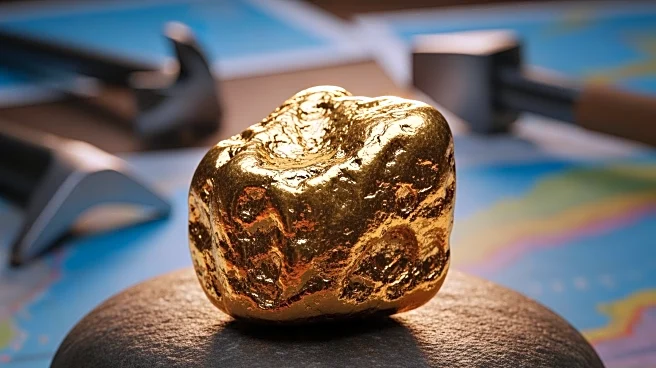What's Happening?
Rio Tinto, a well-established global mining company, and The Metals Company, a Canadian start-up, are both experiencing significant stock price fluctuations. Rio Tinto's stock is trading at a 25% discount
from its pandemic-era high due to changes in global demand for iron ore. Meanwhile, The Metals Company, focused on extracting polymetallic nodules from the Pacific Ocean, has seen its stock drop 30% from its recent high. Both companies are navigating market challenges, with Rio Tinto's operations spanning multiple continents and The Metals Company seeking approval from the International Seabed Authority to commence extraction.
Why It's Important?
The contrasting trajectories of Rio Tinto and The Metals Company highlight the diverse challenges and opportunities within the metals mining industry. Rio Tinto's established operations and dividend offerings make it a stable choice for investors, while The Metals Company's innovative approach to ocean mining presents potential for growth. The fluctuations in stock prices reflect broader economic trends and demand shifts, impacting investor decisions. Understanding these dynamics is crucial for stakeholders looking to invest in the metals sector, as they weigh the risks and rewards associated with established versus emerging companies.
What's Next?
Rio Tinto is likely to continue adjusting its operations in response to global demand changes, particularly in iron ore markets. The Metals Company is awaiting approval from the International Seabed Authority to begin its ocean mining operations, which could significantly impact its future growth and market position. Investors will be closely monitoring these developments, assessing the potential for recovery in stock prices and the strategic moves each company makes to navigate market conditions. The outcome of The Metals Company's application could set a precedent for future ocean mining ventures.
Beyond the Headlines
The Metals Company's focus on ocean mining raises environmental and regulatory considerations, as the extraction of polymetallic nodules involves unique challenges. The company's approach could influence future policies on ocean resource management and sustainability. Rio Tinto's global operations continue to be affected by geopolitical factors and commodity price volatility, requiring strategic adaptations. The comparison between these companies underscores the evolving landscape of the mining industry, where innovation and traditional practices intersect, shaping the future of resource extraction.











